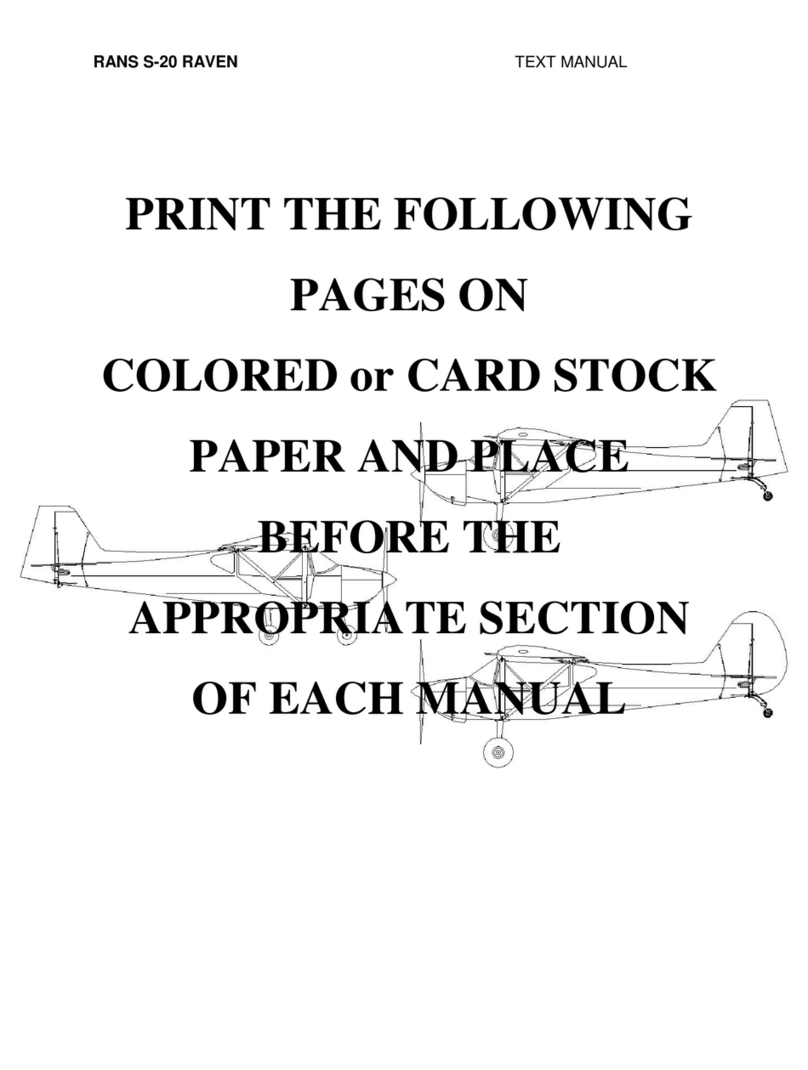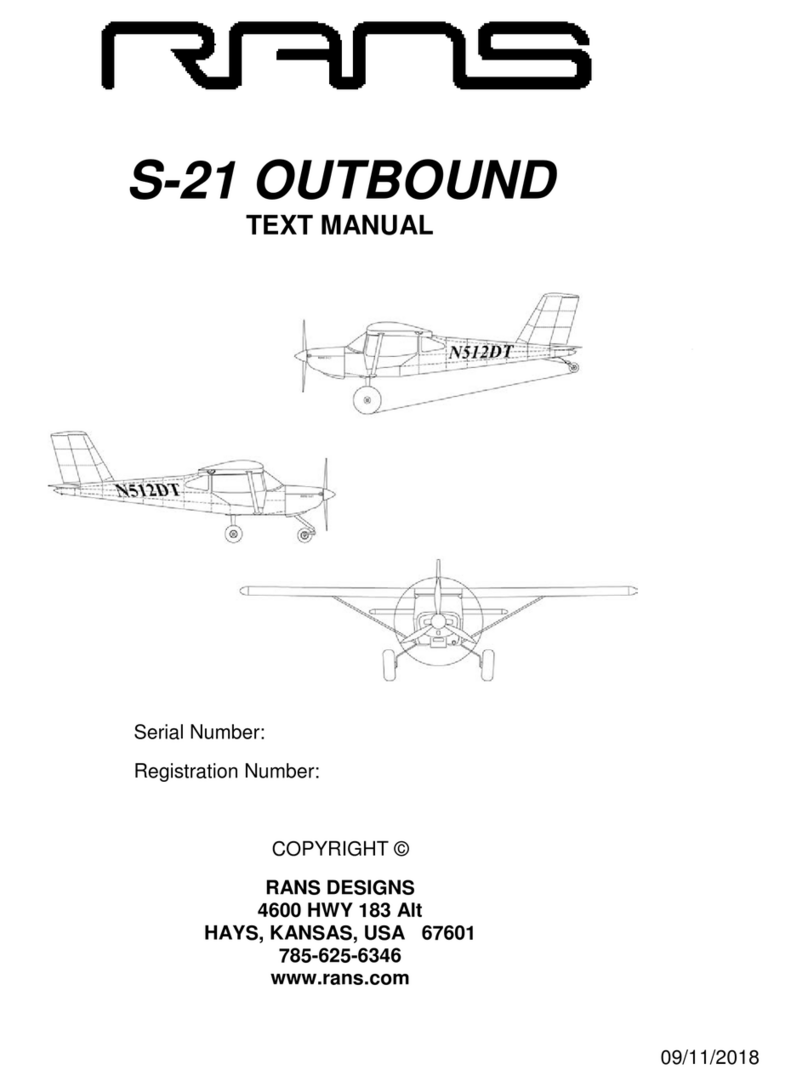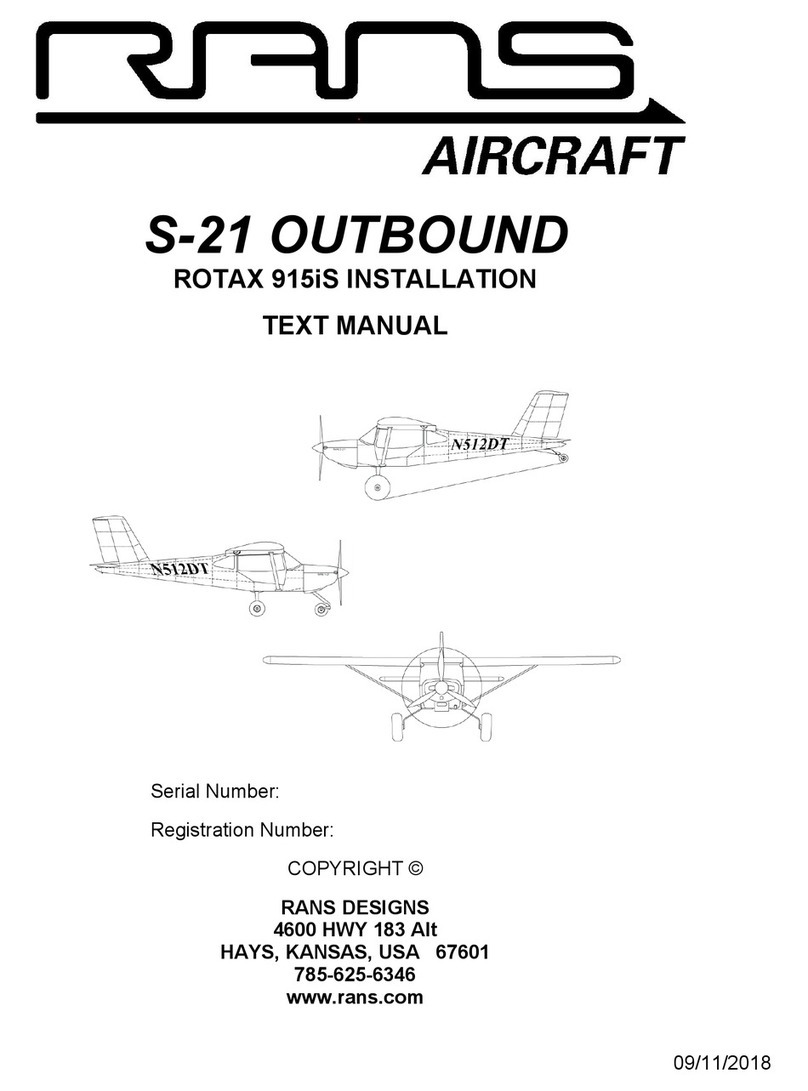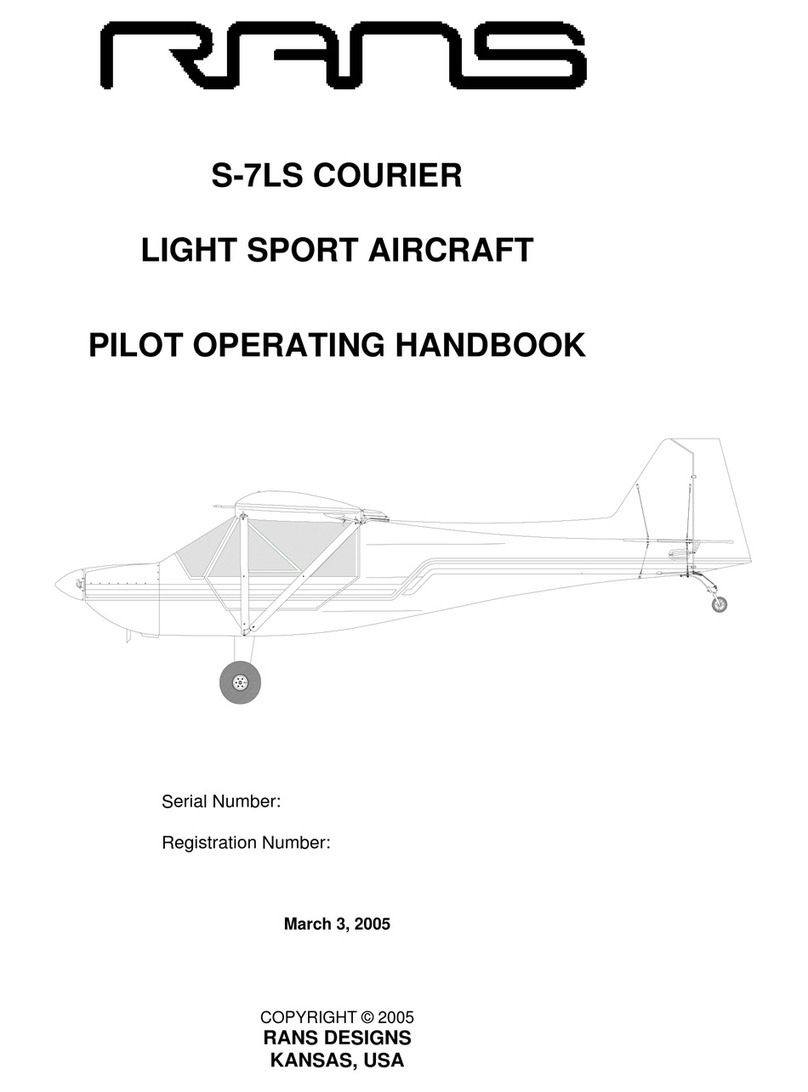
power-off descents, the aircraft will require a slight amount of left rudder. These tendencies
are a result of the required aerodynamic right rudder trim which is set for a condition of level
un-accelerated flight. The pusher prop, rotating counter-clockwise with respect to the lon-
gitudinal axis of the aircraft, is generally located above the vertical tail surfaces and as such
the prop wash hits the left side of the vertical tail causing a nose-left tendency. Corrected in
normal flight with right rudder trim, when the power is cut to idle there is an excess of right
rudder moment and the pilot must use left rudder to fly straight.
Landing Overview
To land this aircraft it is important to remember that it has very little momentum (low gross
weight) and a relatively large amount of drag (big wing). If you are doing an approach with
full flaps and no power, the decent angle will probably exceed 25 degrees and the flare should
occur at no more than one and a half feet above the surface. Why? Because if you flare early,
the airplane will slow down drastically and settle rather abruptly on to the runway. If you
don’t like steep approaches and practically non-existent flares, then don’t use flaps, keep in just
a little power, and if you want a nice gentle and long flare, round out at about 5 feet and add
power at the same time to around 3000 RPM. This is enough power to keep you from slowing
down too much and gives you some time to allow the airplane to settle gently onto the runway
by ever so slightly reducing the power setting and lowering the nose.
Powered Flare Approach
If you are doing the powered flare landing, you should touch down on the main gear with
some power (2500 RPM) and once you do, reduce the power to idle and immediately reduce a
little back pressure. Remember, the more power you have the more tendency for the airplane
to pitch nose down. Even though you are cooking along at 40mph with 2500RPM and you
can’t hardly keep the nose wheel off the ground, when you cut the power the nose will come
up immediately but the airplane will not likely lift off. Let the nose settle to the ground slowly
and keep a little reserve elevator movement for the last few inches so that you can really touch
down softly. If you hold the nose up with full elevator, the airspeed will drop suddenly and so
will the nose, with no more up elevator to stop the motion.
Aerodynamic and Mechanical Braking
For maximum braking effect when on short fields, retract the flaps at touchdown to put weight
on the mains, keep the nose high for aerodynamic braking thru 35mph, all the while using
as much brake pressure as possible without slamming the nose to the ground. When you are
under 30mph, it is best to let the nose wheel down and use maximum brake pressure.
Shutting Down the Engine (on the ground and in-flight)
After you land the aircraft and taxi off the runway, you have already provided an adequate cool
down rest period for the engine. Normally after touch down, the throttle goes to idle and there
is a certain amount of taxing involved. Set the throttle to idle, turn off both ignition circuits
simultaneously and allow the propeller to stop. If you ever decide to turn off the engine while
in flight, it is necessary to do a 30 second ‘cool-down’ run at 3000RPM prior to ignition shut
off. Cutting the engine ignition when the engine has been running at high temperatures will
cause it undue stress. Running the motor at 3000RPM for 30 seconds will circulate water and
put the engine into a state of readiness for shut down. Be sure to reduce from 3000RPM to
idle prior to turning off the ignition circuits. Follow the appropriate start up procedure for hot
or cold start when it is time to re-fire the motor. Be sure to allow suffecient pre-heat time for
the engine to warm up if you shut it off during flight in cold weather.
Emergency Procedures, Off Field Emergency Landings
In the case of an engine that will not start in flight, first focus on flying the airplane at the best
glide speed of 50mph and aiming for a suitable landing field. This is the best still-air glide
speed and essentially is the slowest sink rate. This will maximize your options in gliding to
nearby fields and give you the most time to handle the emergency. If you have enough alti-
tude, go through the checklist for engine starting by first observing fuel quantity and the fuel
valve. Try a warm engine start first and if that fails, use the choke to start the engine. All the
while, do not fail to fly the airplane and under no condition should you ever try to stretch the
glide beyond what the aircraft is capable. Many pilots are killed because they are too ignorant
to recognize that the airplane is coming down whether they approve or not. Save the stall for
the last 1 or 2 feet of altitude if the terrain is very rough. Don’t try to stretch a glide over top
of power lines, it would be better to dive under them. If you stall and/or spin the aircraft at
low altitude, the NTSB accident report will paint an ugly picture of your piloting skills. You
should have enough time after committing to an off-field landing to do the following important
steps: 1) Secure your seatbelts and 2) Un-latch the doors for a speedy egress from the aircraft.
In addition, if you are certain of a serious emergency, do not hesitate to activate the ELT on
your way down...there is no reason to wait for it to activate during the impact. Also if there is
time it would be good to shut off the main fuel valve, but this is not a requirement.
Cruise Flight Fuel Consumption
Although it will not pose an immediate problem, if one of the fuel caps were not vented cor-
rectly you will find that during flight, fuel will feed from one tank only. If both fuel caps are
improperly vented and are exposed to low pressure, the engine will likely starve for fuel before
making it to the cruise flight situation. It is highly recommended to make estimated calcula-
tions regarding fuel usage, NEVER ASSUME that the quantity of fuel indicated in one tank
is also in the other tank. If there is any indication of something that isn’t quite right, make a
cautionary landing as soon as practicable.
Cruise, Climbs and Descents
This airplane was meant to move at 65mph. Essentially everything is done at 65mph. Climb
at 65mph, cruise at 65mph and descend at 65mph. As with any aircraft, the technique is to
adjust your pitch for airspeed (elevator stick pressure) and adjust your power for the climb/
descent rate. An intelligent reader quickly notes that flying this aircraft at 65mph ALL the time
results in moderate throttle usage. Just as mentioned previously, the throttle in this aircraft is
just as important as any other control. Learn to use it just like you use your feet on the rudders
or your hand on the stick. Add power to increase your climb rate, decrease power to increase
your descent rate. If you are flying too high, don’t just push the stick forward but also reduce
the throttle. If you are too low, don’t just pull the stick back but also add power. The plane
will cruise most comfortably at around 65mph indicated airspeed but cruising at 70, 75 or even
80mph is easy because of the excess power. Respect the yellow range marking on the airspeed
indicator because it is there for a purpose. Higher speeds are reserved for only the smoothest
of air.
Pitch Trim
There are two forces that trim the aircraft in its pitch attitude: power and elevator/horizontal
stabilizer position. Understand that adding power will add a nose down trim to the airplane
and reducing power will add a nose up trim to the airplane (remember the thrust line of the
engine is above the center of the airplane). Also understand that increasing airspeed adds a
PAGE 7









































